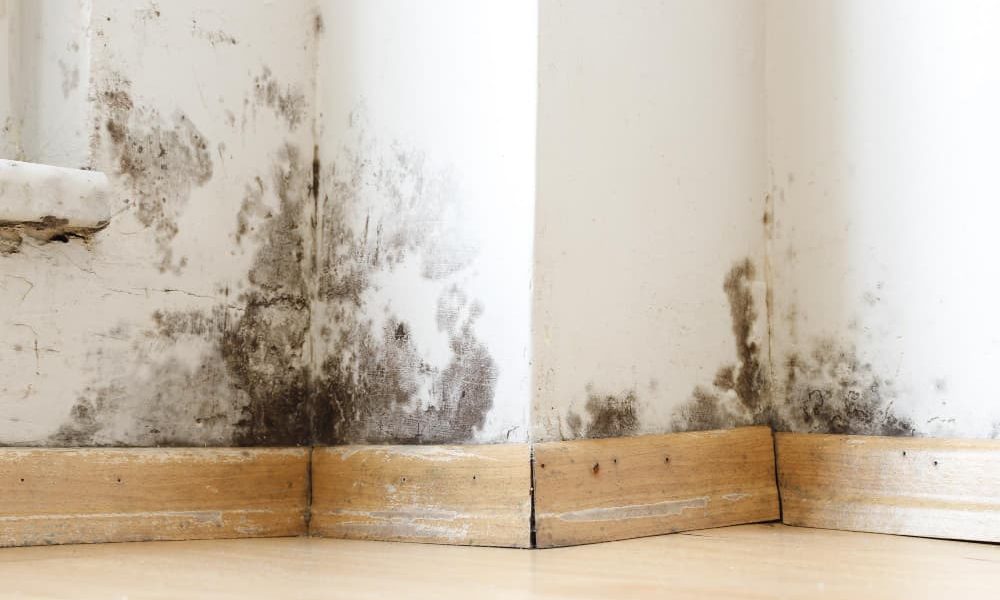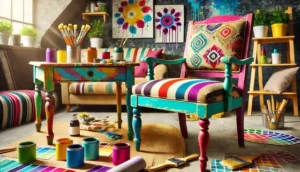In a world where sustainability is becoming increasingly important, repurposing everyday items has become a stylish and eco-friendly trend in home decor. One of the simplest and most practical ways to embrace this movement is by transforming old wooden crates into beautiful and functional storage shelves. These versatile crates, often found in markets, farms, or even your local hardware store, offer endless possibilities for creating unique and rustic shelving solutions that can add both charm and functionality to any room in your home.
Not only is repurposing wooden crates an affordable option, but it’s also a great way to reduce waste, adding a touch of creativity and personalization to your living space. Whether you’re looking to add a vintage touch to your kitchen, create rustic bookshelves for your living room, or simply organize your bathroom supplies, wooden crate shelving can be the perfect solution.
In this article, we’ll dive into everything you need to know about turning these old crates into stylish shelves, from understanding the types of crates that work best, to tips on how to prepare, clean, and install them. By the end, you’ll be ready to tackle your next DIY project with confidence.
What You Need to Know Before Using Wooden Crates for Shelving
Before you begin transforming old wooden crates into storage shelves, there are a few key factors to consider. Not all crates are created equal, and depending on the origin and condition of the crates you have, you may need to take extra steps to ensure they are sturdy and suitable for use in your home.
Types of Wooden Crates Suitable for Shelving
When selecting crates for repurposing, it’s important to consider the type of crate you’re working with. There are various kinds of wooden crates available, ranging from fruit crates and wine crates to industrial shipping crates. Each type has its unique attributes and suitability for different projects.
- Fruit Crates: These are often lightweight and come with an aged, rustic look, which makes them ideal for decorative purposes. However, they may not be as sturdy for holding heavier items, so it’s important to reinforce them if necessary.
- Wine Crates: Wine crates are generally stronger than fruit crates and have a more polished appearance. They’re perfect for shelving that needs to hold medium-weight items, such as books, vases, or kitchen supplies.
- Shipping Crates: Industrial shipping crates are the most durable and can support heavier weights. These are ideal if you’re looking to create sturdy shelves for tools, larger books, or electronics.
Ensuring the Structural Integrity of Old Wooden Crates
Once you’ve chosen the type of crate, the next step is ensuring its structural integrity. Since these crates may have been used for a variety of purposes, it’s essential to inspect them for any damage or wear and tear that could compromise their strength.
- Check for Cracks and Splinters: Over time, wooden crates can develop cracks, splinters, or signs of rot. Thoroughly inspect each crate for these imperfections, especially along the seams and corners. If the damage is minimal, you can reinforce the crate with wood glue or nails. For more significant damage, it’s best to use these crates for decorative purposes only.
- Stability Test: Before repurposing the crates, test their stability by applying light pressure to different parts. This will help you gauge whether the crates can safely support weight once mounted on a wall or stacked together.
- Sanding for Safety: If the crates feel rough to the touch or have splinters, make sure to sand them down with fine-grit sandpaper. This step will ensure that the crates are smooth, safe to handle, and ready for finishing touches like paint or stain.
Safety Tips for Securing Crates to Walls
Mounting wooden crates as shelving units can be a stylish addition to your home, but it’s essential to prioritize safety during installation. When hanging or stacking these crates, you want to ensure they are securely fastened to prevent accidents.
- Stud Finder: Use a stud finder to locate the wooden beams behind your walls. Crates should be mounted directly onto studs for maximum support. If no stud is available in your desired location, you’ll need to use wall anchors to safely hold the weight.
- Mounting Hardware: Opt for heavy-duty mounting brackets or L-brackets to securely fasten the crates to the wall. This will help distribute the weight and prevent sagging over time. Screws should be long enough to penetrate both the crate and the stud or anchor.
- Weight Capacity: It’s important to be mindful of the weight you intend to place on these shelves. For lightweight items, such as decorative pieces, a simple mounting system will suffice. However, if you’re planning to store heavier items like books or tools, reinforce the crates with additional supports and hardware.
Cleaning and Preparing Old Crates for DIY Projects
Once you’ve selected your crates and ensured they’re structurally sound, it’s time to clean and prepare them for repurposing. Since these crates may have been used for transporting food or industrial goods, they can carry dirt, grime, or even pesticide residue. Proper cleaning is crucial for both appearance and safety.
Cleaning Wooden Crates
- Start with a Dry Brush: Use a stiff-bristle brush to remove loose dirt and debris from the surface of the crates. Pay close attention to corners, seams, and any hard-to-reach areas.
- Mild Soap and Water: Mix a solution of mild soap and water to clean the crates more thoroughly. Using a sponge or cloth, gently scrub the wood to remove grime. Avoid soaking the wood, as excess moisture can cause warping.
- Disinfect if Necessary: If you suspect the crates may have come into contact with pesticides or harmful chemicals, use a solution of water and white vinegar to disinfect them. This natural cleaning agent is effective without introducing harsh chemicals into your home.
- Dry Thoroughly: After cleaning, allow the crates to air dry completely. Place them in a well-ventilated area, preferably outdoors, to speed up the drying process. Wood that isn’t fully dry can develop mold or mildew when sealed or painted.
Sanding and Painting Wooden Crates
Once your crates are clean and dry, you’ll want to sand them down to create a smooth surface for painting or staining. Sanding not only removes splinters but also helps the paint or stain adhere more evenly to the wood.
- Sanding Tips: Start with medium-grit sandpaper (around 120-grit) to smooth the surface, then finish with fine-grit (220-grit) for a polished look. Make sure to sand all areas, including corners and edges, for a uniform finish.
- Choosing Paint or Stain: Depending on the aesthetic you’re aiming for, you can either paint the crates for a colorful, modern look or stain them to enhance the natural wood grain for a rustic feel. If you’re planning to use the shelves in a humid environment, such as a bathroom or kitchen, consider applying a sealant to protect the wood from moisture.
By following these steps, you’ll have a solid foundation to create your DIY wooden crate shelving system. Proper preparation is key to ensuring your project is both safe and stylish, setting the stage for a functional and decorative home upgrade.
Step-by-Step Guide to Repurposing Wooden Crates into Shelves
Now that you’ve cleaned and prepped your crates, it’s time to transform them into functional and stylish shelves. Whether you’re mounting them on the wall or stacking them to create a free-standing unit, these step-by-step instructions will guide you through the process.
Step 1: Gather Your Tools and Materials
Before you start, make sure you have all the necessary tools and materials on hand. For this project, you’ll need:
- Wooden crates (prepped and cleaned)
- Sandpaper (if you haven’t sanded yet)
- Paint or wood stain (optional)
- Paintbrushes or rollers
- Stud finder (for wall mounting)
- Wall anchors (if no studs are available)
- Screws and heavy-duty mounting brackets or L-brackets
- Drill and screwdriver
- Measuring tape and level
- Pencil or chalk for marking placement
Step 2: Plan the Layout of Your Shelves
Decide where and how you want to display your crates. This step is crucial, as it will influence the placement, height, and overall design of your shelves.
- Wall-Mounted Shelves: If you’re mounting the crates on the wall, take measurements to ensure they’re evenly spaced and positioned at the right height. Use a level to make sure the crates will hang straight. You can create a grid pattern, staggered look, or even hang the crates in a vertical column.
- Stacked Shelves: For a free-standing shelving unit, consider the arrangement of crates in terms of height and stability. Stacking crates vertically creates more height, while laying them horizontally provides a wider storage space. You can secure the crates to one another with screws or brackets for added stability.
Step 3: Secure the Crates
If you’re going for wall-mounted shelves, follow these instructions to securely attach the crates:
- Find the Studs: Use a stud finder to locate the wooden studs in your walls, which will provide the most support for the crates. Mark their location with a pencil or chalk.
- Drill Pilot Holes: Once you’ve decided on the placement, use a drill to make pilot holes where the screws will go. This will prevent the wood from splitting when you drive the screws in.
- Attach the Brackets: Attach heavy-duty brackets or L-brackets to the bottom of the crates. Then, align the brackets with the pilot holes on the wall, and use screws to secure the crates to the wall.
- For Wall Anchors: If no studs are available, use wall anchors to secure the screws in place. Follow the same process, but use the anchors to reinforce the attachment.
For stacked or free-standing shelves, secure the crates by drilling screws into the side panels where they overlap or touch. You can also use wood glue for additional strength, but screws will offer more stability.
Step 4: Style and Organize
Once your crates are securely mounted or stacked, it’s time to fill them with your belongings. You can use your new shelves to display decorative pieces like vases, books, or plants, or store functional items like towels, kitchen supplies, or office materials. The versatility of wooden crate shelves means you can mix and match items for both style and practicality.
Creative Ideas for DIY Wooden Crate Shelving
Now that you know how to build your crate shelves, it’s time to get creative! There are endless ways to arrange and customize your wooden crate shelves, allowing you to create unique designs that suit your personal style and the needs of each room in your home.
How to Stack Wooden Crates to Create Unique Storage Solutions
One of the simplest yet most creative ways to use wooden crates is to stack them in different configurations to create a customized shelving unit. This works especially well if you’re short on space or want to create a statement piece for your room. Here are some ideas:
- Pyramid Shape: Stack the crates in a pyramid or triangular shape by starting with a wider base and tapering as you go up. This works well for creating a dynamic shelving unit in living rooms or entryways.
- Staggered Shelving: For a modern, asymmetrical look, stagger the crates so that they don’t line up perfectly. This gives the illusion of floating shelves and works great for displaying decorative pieces like books, plants, or collectibles.
- Crate Tower: Create a tower by stacking crates vertically. This is ideal for smaller spaces where floor space is limited but vertical space is available. Use this method in bedrooms or home offices to store books, paperwork, or clothing.
Floating Wooden Crate Shelves for a Minimalist Design
If you love minimalism, floating wooden crate shelves can be an eye-catching and functional addition to your home. By using smaller crates or cutting larger ones in half, you can create floating shelves that give the appearance of crates “hovering” on the wall.
- Minimalist Floating Design: Choose crates of the same size, sand them down for a clean finish, and either paint or stain them in neutral tones. Mount them using hidden brackets for a sleek, streamlined appearance. These work great in hallways, living rooms, or bathrooms where you need extra storage but don’t want to overpower the space with large pieces of furniture.
- Combine with Other Shelving: You can also combine floating wooden crate shelves with traditional shelving to create a mixed-media storage solution. Pair the natural wood look with metal or glass elements for a modern, industrial vibe.
Combining Crates of Different Sizes for Multi-Functional Storage
Don’t limit yourself to using crates of the same size! One of the best ways to get creative with wooden crate shelving is to mix and match crates of different dimensions. This approach adds visual interest and allows for more flexible storage options.
- Large and Small Crate Combo: Use larger crates at the bottom of your shelving unit to store bigger items like blankets, storage bins, or larger decor pieces. Then, place smaller crates above or alongside to store books, trinkets, or plants. The variation in size will create a layered look, perfect for living rooms or home offices.
- Crates in Odd Numbers: Odd numbers tend to create more visually appealing displays. Try arranging three or five crates in a way that draws the eye upward or outward, creating a balanced but interesting design.
Using Wooden Crates for DIY Shelves in Different Rooms
One of the best things about wooden crate shelves is their versatility. No matter which room in your house needs extra storage, these DIY shelves can be tailored to fit your space and storage needs.
Rustic Wooden Crate Storage Ideas for Living Rooms
In the living room, wooden crate shelves can serve as both practical storage and a stylish display solution. Use the rustic look of crates to enhance a cozy, farmhouse-style space, or paint them to match a modern, minimalist aesthetic.
- Entertainment Center: Stack and mount crates to create an entertainment center with plenty of space for electronics, DVDs, books, and decorative items. You can easily customize the size and layout of the unit to fit around your television or media setup.
- Bookshelves: Crates make perfect bookshelves, allowing you to store a variety of books and magazines while also displaying decorative items like framed photos, small plants, or sculptures.
Wooden Crate Shelves for Kitchen Storage
In the kitchen, wooden crates can be used to store everything from spices to dishware. Mount smaller crates on the wall to hold spices, cooking utensils, and pantry items, or use larger crates as a replacement for traditional shelving to store pots, pans, and glassware.
- Floating Spice Rack: Use small wooden crates as a floating spice rack near your stove for easy access to your most-used spices. You can even label the crates or paint them with chalkboard paint for added functionality.
How to Create Wooden Crate Bookshelves for a Home Office
A home office can benefit greatly from crate shelving, providing a stylish and affordable way to organize paperwork, books, and office supplies. Use crates of different sizes to store everything from binders and folders to decor and electronics.
- Paper and File Organization: For a clean and organized look, use small crates to store papers, files, and office supplies. Stack them vertically on your desk or mount them on the wall to keep your workspace clutter-free.
Repurposing Crates into Bathroom Storage Shelves
In the bathroom, wooden crate shelves are an excellent solution for organizing towels, toiletries, and other essentials. Since bathroom space is often limited, using crates helps maximize vertical storage.
- Towel Storage: Mount or stack crates to create towel storage near the sink or shower. Use larger crates to store rolled-up towels and washcloths, and smaller crates for toiletries and bathroom decor.
By creatively using wooden crates in different rooms and experimenting with stacking, mounting, and finishing techniques, you can transform old, unused crates into beautiful and functional storage solutions for your home. These DIY shelves are not only affordable but also offer endless possibilities for customization, making them a perfect addition to any room.
Decorating and Personalizing Wooden Crate Shelves
Once you’ve installed your wooden crate shelves, the fun begins: customizing them to reflect your style and make them functional for your space. Wooden crates are incredibly versatile, allowing you to personalize them with different finishes, decorative details, and organizational features. Whether you want a rustic, industrial, or modern look, these tips will help you transform plain crates into stylish storage solutions.
How to Paint and Stain Wooden Crates for a Custom Look
One of the easiest ways to personalize your wooden crate shelves is through painting or staining. Both options can drastically change the aesthetic of your crates and help them fit seamlessly into your home decor.
- Painting for a Fresh, Modern Look: Painting your crates can bring a pop of color to your space and make the crates look more polished. You can choose a single color to match your room’s palette or create a multi-colored design by painting each crate a different hue. For a contemporary look, consider using bright, bold colors like turquoise, mustard yellow, or emerald green. On the other hand, white, black, or gray crates can provide a sleek, minimalist vibe.
- Pro Tip: For a fun twist, paint the interior of each crate a different color than the exterior to create contrast and visual interest.
- Staining for a Rustic, Natural Finish: If you prefer a more rustic or industrial look, staining is an excellent option. Stains enhance the natural wood grain and give the crates a warm, organic feel. Choose a dark stain for a rich, vintage vibe, or a lighter stain to maintain a more subtle, modern touch. Stained crates look great in farmhouse, bohemian, or mid-century modern homes.
- Pro Tip: Before applying the stain, test it on a small, inconspicuous area to make sure the color is right for you.
Adding Decorative Knobs or Hooks for Extra Functionality
To add both functionality and style, consider adding decorative knobs, hooks, or handles to your crates. These small details can transform a plain crate into a piece of functional decor.
- Decorative Knobs: Adding vintage-style or artistic knobs to the front of your crate shelves can give them an extra design element while also providing a way to hang lightweight items like bags, keys, or jewelry. This works especially well in entryways, bathrooms, or bedrooms.
- Hooks for Additional Storage: Attach hooks to the bottom or sides of the crates to increase storage options. These hooks can hold towels, kitchen utensils, or even small baskets. Using hooks with crates is a space-saving hack, particularly useful in smaller rooms like bathrooms or kitchens.
Using Labels or Chalkboard Paint for Organizing Shelves
For a personalized and practical touch, use labels or chalkboard paint to make your crate shelves more organized and user-friendly. This is especially helpful in spaces like home offices, kitchens, or kids’ rooms where organization is key.
- Labels for Easy Organization: Adding labels to the front of each crate helps identify what’s stored inside, making it easier to stay organized. You can use simple adhesive labels, or get creative with hand-painted signs or printed tags. This method works well for crate shelves that store pantry goods, craft supplies, or children’s toys.
- Chalkboard Paint: For a versatile labeling system, paint a portion of the crate with chalkboard paint. This allows you to write, erase, and update the contents as often as needed. It’s a great option for kitchen storage or a home office where items may change frequently.
DIY Crate Shelves for Small Spaces
Small spaces can pose a significant challenge when it comes to storage, but wooden crate shelves offer a creative and space-efficient solution. With their ability to be mounted on walls or stacked vertically, crates allow you to maximize your space without sacrificing style or functionality.
How to Maximize Vertical Storage Using Wooden Crates
One of the best strategies for creating storage in small spaces is to utilize vertical space. Instead of taking up valuable floor space with bulky furniture, wooden crate shelves can be mounted on the wall or stacked to create tall, slim storage units.
- Vertical Crate Towers: Stack wooden crates vertically to create a narrow tower of shelves that fits into tight spaces like corners or narrow walls. This technique is especially useful in small bathrooms or bedrooms where floor space is limited, but you still need a place to store essentials.
- Floating Crates for Wall-Mounted Storage: In areas where you can’t afford to give up floor space, such as kitchens or hallways, consider mounting crates to the wall. Floating crate shelves keep your items off the floor and within easy reach, and they can be arranged to take advantage of unused wall space.
Space-Saving Tips for Small Apartments and Studio Flats
When space is tight, it’s essential to be strategic about storage. Here are some space-saving tips for using wooden crate shelves in small apartments and studios:
- Stack and Nest Crates: Stack crates on top of each other, or nest smaller crates inside larger ones to save space when you need flexible storage options. This technique works well in studio apartments where furniture often serves multiple purposes.
- Under-the-Bed Storage: Use wooden crates to create under-the-bed storage. This is a great way to hide away items like seasonal clothing or extra linens while keeping your space clutter-free.
- Crate Shelves as Room Dividers: In an open-concept studio flat, use crate shelving units as room dividers. By stacking crates in a way that creates separate spaces while also offering storage, you can maximize both functionality and style in a small apartment.
Compact Crate Shelving Solutions for Tight Spaces
In the smallest spaces, it’s important to think creatively about how to make the most of every square inch. Compact crate shelving units can be customized to fit into alcoves, corners, or other tight areas that would otherwise go unused.
- Corner Shelves: Use small or half-sized crates to create corner shelves that provide storage without taking up valuable wall or floor space. Corner crate shelves are perfect for small bathrooms, entryways, or kitchens where space is limited.
- Over-the-Door Crate Storage: Mount a wooden crate shelf above a door to create extra storage in a space that would otherwise be wasted. This works well in small bedrooms or bathrooms where storage is often at a premium.
Cost Considerations for DIY Wooden Crate Shelves
One of the most appealing aspects of using wooden crates for DIY shelving is the cost-effectiveness of the project. Whether you’re on a tight budget or simply want to save money on home decor, repurposing wooden crates can be an affordable solution. That said, there are a few key factors to consider when budgeting for your project.
How to Find Affordable or Free Wooden Crates for Repurposing
Wooden crates can often be found at little to no cost if you know where to look. Here are some ideas for sourcing affordable or free crates:
- Local Markets or Farms: Many markets and farms use wooden crates to transport fruits and vegetables. Once the crates are used, they may be discarded or sold at a low price. Check with your local farmers or grocers to see if they have any crates available for free or cheap.
- Craigslist, Facebook Marketplace, or Freecycle: Online marketplaces and community groups are excellent resources for finding free or inexpensive wooden crates. Many people give away old crates as they declutter, so keep an eye on local listings for deals.
- Hardware or Craft Stores: If you can’t find free crates, hardware and craft stores often sell wooden crates for a reasonable price. Look for sales or discounts, especially if you need multiple crates for a larger shelving unit.
Budget-Friendly Ways to Customize Wooden Crate Shelves
While wooden crates themselves can be inexpensive, you can still incur costs when customizing and installing them. However, there are plenty of budget-friendly ways to personalize your shelves without breaking the bank:
- DIY Paint and Stain: Instead of purchasing expensive pre-made shelves, use affordable paint or stain to customize the look of your crates. Buying small sample pots of paint or mixing your own stain can save money while still achieving a high-end look.
- Repurpose Hardware: Instead of buying new brackets or handles, repurpose hardware from old furniture or thrift store finds. Upcycling existing materials is not only budget-friendly but also adds a unique, personalized touch to your shelving.
With these creative tips for decorating, maximizing space, and keeping costs low, wooden crate shelves can become a central feature of any room, offering both style and practicality. No matter your space or budget, repurposing wooden crates is a DIY project that combines functionality, sustainability, and personalization, making it a perfect solution for anyone looking to enhance their home with minimal expense.
Frequently Asked Questions
As you embark on your DIY wooden crate shelving project, you may encounter a few questions. Here are answers to some of the most common concerns people have when repurposing crates into shelves.
Can You Use Old Fruit or Wine Crates for Shelving?
Yes, old fruit or wine crates are excellent materials for DIY shelving, but there are some important considerations to keep in mind:
- Condition of the Crates: Since fruit and wine crates are often used to transport goods, they may show signs of wear and tear. Make sure to inspect them carefully for structural damage, cracks, or signs of rot. Reinforce them if necessary by using wood glue, nails, or additional brackets.
- Cleanliness: Old crates may have residue from food, wine, or even chemicals used during shipping. Be sure to thoroughly clean and disinfect the crates before repurposing them, especially if they will be used in kitchens or bathrooms.
- Weight Capacity: Fruit and wine crates can sometimes be on the lighter side in terms of durability. For heavier items, consider reinforcing the crates or choosing sturdier options like shipping crates or industrial-grade boxes.
How Do You Make Wooden Crate Shelves Safe and Secure?
Safety is essential when installing wooden crate shelves, especially if they will be used to hold heavy items. Here are some tips to ensure your shelves are both safe and secure:
- Anchor to Wall Studs: The most secure way to mount wooden crate shelves is by anchoring them into wall studs, which provide strong support. Use a stud finder to locate the studs, and drill directly into them to ensure the shelves are stable.
- Use Heavy-Duty Brackets: Depending on the weight of the items you plan to store, consider using heavy-duty mounting brackets or L-brackets to support the crates. These brackets distribute the weight evenly, preventing sagging or falling.
- Reinforce Crates for Stability: If your crates are older or not structurally sound, reinforce them with screws, nails, or even wood glue to increase their strength. This is particularly important if you plan to store heavier items like books or electronics.
What’s the Best Way to Mount Wooden Crates on the Wall?
Mounting crates on the wall can be done in a few simple steps, but it’s important to ensure they’re secure and level. Follow these guidelines for a safe installation:
- Mark the Placement: Before drilling, use a measuring tape and level to mark where you want the crates to be positioned. This will ensure that they’re evenly spaced and straight.
- Drill Pilot Holes: To avoid splitting the wood, drill pilot holes where the screws will go. Pilot holes also make it easier to drive the screws in, particularly when mounting into studs or wall anchors.
- Use Wall Anchors if Necessary: If no studs are available, opt for wall anchors to provide extra support. Wall anchors are designed to hold the screws securely in drywall, ensuring that the crates won’t come loose.
Conclusion
Repurposing old wooden crates into DIY storage shelves is not only a creative way to add personality and charm to your home but also a practical solution for organizing and decluttering your space. With a little effort, you can turn discarded or forgotten crates into beautiful, functional pieces that fit seamlessly into any room.
From understanding how to select the right type of crate, to preparing and reinforcing them for safety, this guide has covered everything you need to know to embark on your DIY journey. Whether you’re looking for a rustic touch to your living room, compact storage for a small apartment, or a stylish organizational solution for your kitchen, wooden crate shelves can be customized to fit your unique style and space.
So why wait? Gather your materials, tap into your creativity, and start your wooden crate shelving project today. With just a few simple tools and a bit of imagination, you can create a personalized storage solution that’s as beautiful as it is functional. Let your home reflect your resourcefulness and commitment to sustainability by giving old crates new life as stylish, eco-friendly shelves. Happy crafting!







